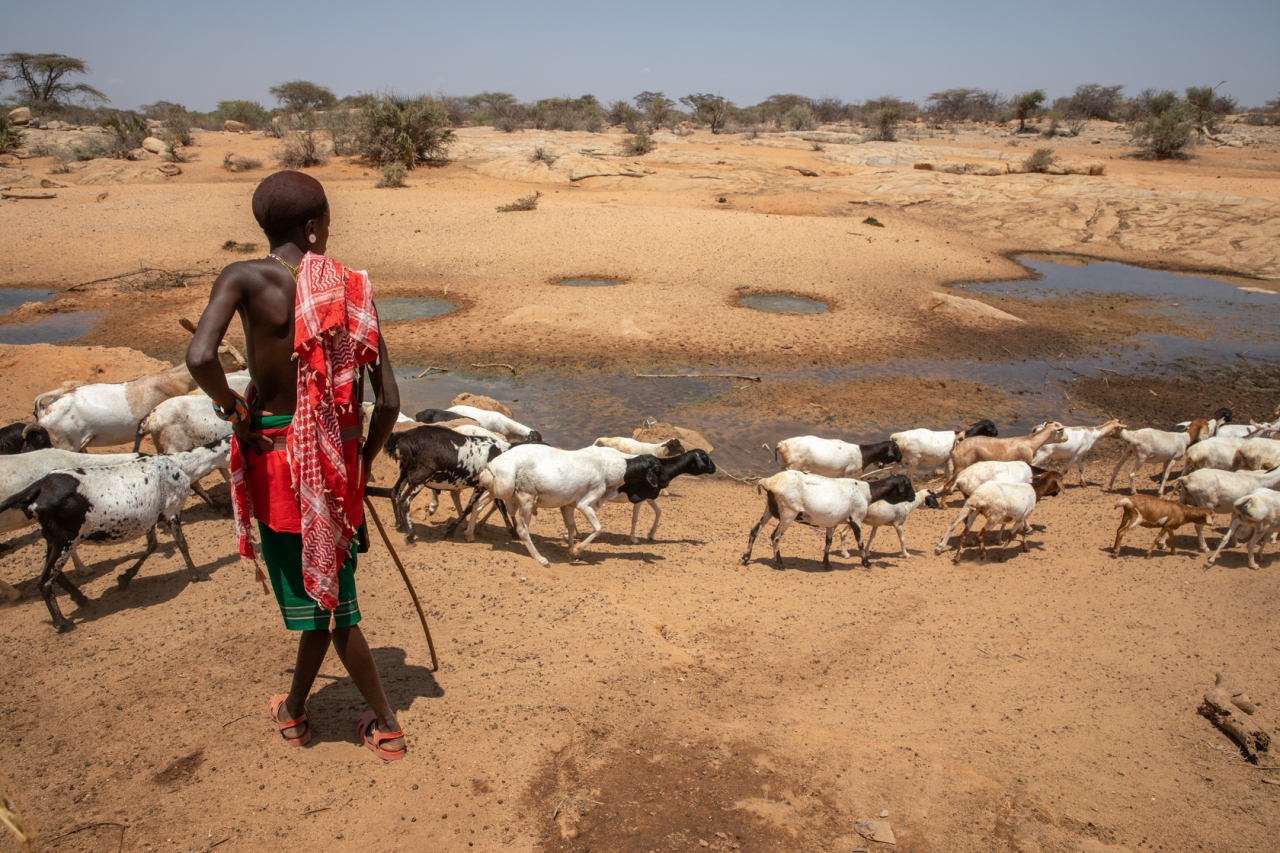Five Ways Climate Change Is Impacting Humanitarian Crises Around the World
By Erin Connor
Published 09-07-22
Submitted by Cisco Systems, Inc.

It is impossible to read the news these days and not be struck by the record-breaking heatwaves, intense wildfires, prolonged droughts, severe storms, and widespread flooding. The effects of climate change are all around us. Yet those most affected by climate change are already vulnerable populations, many of whom are living in some of the poorest countries in the world. These communities are at the forefront of the climate crisis and lack the resources to adapt, respond to, and recover from an increasing number of crises.
For World Humanitarian Day, we are sharing five ways that climate change is causing humanitarian crises around the world, and highlighting the ways our nonprofit partners are responding:
1. Extreme weather
Rising sea levels are leading to higher storm surges and more frequent and severe floods. Higher temperatures lead to more evaporation — with more moisture in the air, rainfall levels increase. At the same time, evaporation can dry out the soil in summer months, and intensify droughts over time. The net result is an increase in the frequency and severity of extreme weather events — forcing people from their homes and limiting their access to basic needs. As temperatures continue to rise, we expect to see an even greater frequency of severe storms.
Cisco has worked closely with NetHope over the last 20 years, deploying in over a dozen countries to provide critical connectivity for humanitarian responders and the communities affected by natural disasters. Cisco’s newly launched five-year partnership with NetHope is focused on expanding its Disaster Preparedness, Response and Resiliency Program. Through NetHope’s network of 60+ NGO members operating in over 100 countries, the initiative aims to reduce the time it takes to reconnect life-saving digital networks so that hard-hit communities are more resilient and recover faster from climate-driven crises.
2. Food insecurity
Climate-driven extreme weather emergencies such as storms and droughts can damage crops and lead to massive food shortages. Climate change is also causing erosion, salination and desertification of the world’s fertile farmland. This is even more dire when we consider that the world needs to produce at least 50 percent more food to feed 9 billion people by 2050, while climate change could cut crop yields by more than 25 percent.
Smallholder farmers represent a majority of the world’s poorest people and are responsible for producing a significant proportion of the world’s food. About 500 million households (representing more than 2 billion people) depend on small farms for food and income. Cisco nonprofit partners myAgro, One Acre Fund and Digital Green are all leveraging technology to help smallholder farmers in India and Africa adopt climate-resilient agricultural practices and increase their crop yields — thereby boosting rural incomes and increasing food security in rural communities.
Earlier this year, Cisco committed $5M to expand its partnership with Mercy Corps to focus on climate adaptation and resilience, starting with pastoralist communities in the Horn of Africa. The region’s increasingly devastating drought is threatening the lives and livelihoods of over 20 million people; pastoralist farmers that rely on rangeland are among the most vulnerable. With Cisco support, Mercy Corps is working to provide pastoralists with the digital tools, information, and resources needed to make climate risk-informed decisions and manage key environmental resources in ways that can withstand their changing environment.
3. Water scarcity
Today, 771 million people — 1 in 10 — lack access to safe drinking water. The climate crisis is exacerbating water scarcity and shrinking water supplies for millions of people. Experts predict that by 2050, up to 3.2 billion people will live in severely water-scarce areas. At the same time, extreme weather events and increased incidences of flooding can destroy or contaminate water sources. Lack of access to clean water has a direct impact on public health, food production, education, and economic stability.
While the water crisis can feel overwhelming, we believe that technology can help organizations and local communities manage limited water resources in a more effective, efficient, and sustainable way. Cisco partners with nonprofit organizations like Akvo, charity: water and Safe Water Network, investing in the development of technology-based solutions that increase access to safe drinking water for vulnerable communities around the world.
4. Mass migration and displacement
Displacement is one of the most devastating consequences of climate change. According to the UN Refugee Agency (UNHCR), an annual average of 21.5 million people have been forcibly displaced by weather-related events since 2008. These numbers are expected to continue increasing with climate change, with some experts predicting that 1.2 billion people could be displaced globally by 2050 due to climate change and natural disasters.
Cisco works with strategic partners that focus on protecting and supporting people affected by displacement, including the International Rescue Committee (IRC), Mercy Corps, Norwegian Refugee Council (NRC), Save the Children and UNHCR. With Cisco support, these organizations have digitized refugee programs and services, developed technology solutions that provide critical information and case management services for refugees, and installed Cisco networking equipment to enable access to information and resources for refugee populations around the world.
5. Social instability and conflict
While climate change does not directly cause conflict, it can increase social tension and the risk of conflict as communities are forced to share diminishing resources. Syria is a good example: the country’s most recent drought — from 2006-2010 — was considered the worst in 900 years. Agricultural land was devastated and 85 percent of the country’s livestock died. Food prices doubled, people lost their jobs, and those in rural areas flocked to the cities. The climate crisis served to amplify social tension among ethnic groups and exacerbated political crises that already existed. The ensuing war has left nearly 7 million people displaced within Syria and another 5 million Syrians have fled the country since 2011.
Cisco partners Mercy Corps, IRC, NRC, and Save the Children respond to the world’s worst humanitarian crises, including those affected by the wars in Syria and Ukraine. Many of these organizations incorporate peacebuilding initiatives into their programs to reduce and prevent violence. Mercy Corps, for example, is implementing nearly 50 peacebuilding programs in more than 20 countries. These NGOs work extensively with internally displaced people in need of humanitarian aid, as well as with refugee populations that have fled their home countries due to violence.
Climate change has a direct impact on people’s ability to access resources and meet basic needs like food, water, and shelter. Cisco Crisis Response aims to equip and empower our emergency response and humanitarian partners with the resources (funding, technology, expertise) they need to help communities on the frontlines of this crisis adapt to their changing environment, build resilience to reduce the impact of climate change, and ultimately improve their livelihoods and well-being.
View original content here.

Cisco Systems, Inc.
Cisco Systems, Inc.
About Cisco
Cisco (NASDAQ: CSCO) is the worldwide leader in technology that powers the internet. Cisco inspires new possibilities by reimagining your applications, securing your data, transforming your infrastructure, and empowering your teams for a global and inclusive future. Discover more on The Network and follow us on Twitter.
About Cisco's Purpose
Cisco’s purpose is to Power an Inclusive Future for All. From increasing access to skills needed to thrive in a digital economy to supporting the most vulnerable in times of crisis, we’re committed to using our technology for good. Cisco is also leveraging our scale and innovation to help ensure that our increasingly digital future is sustainable, inclusive, and resilient.
More from Cisco Systems, Inc.

